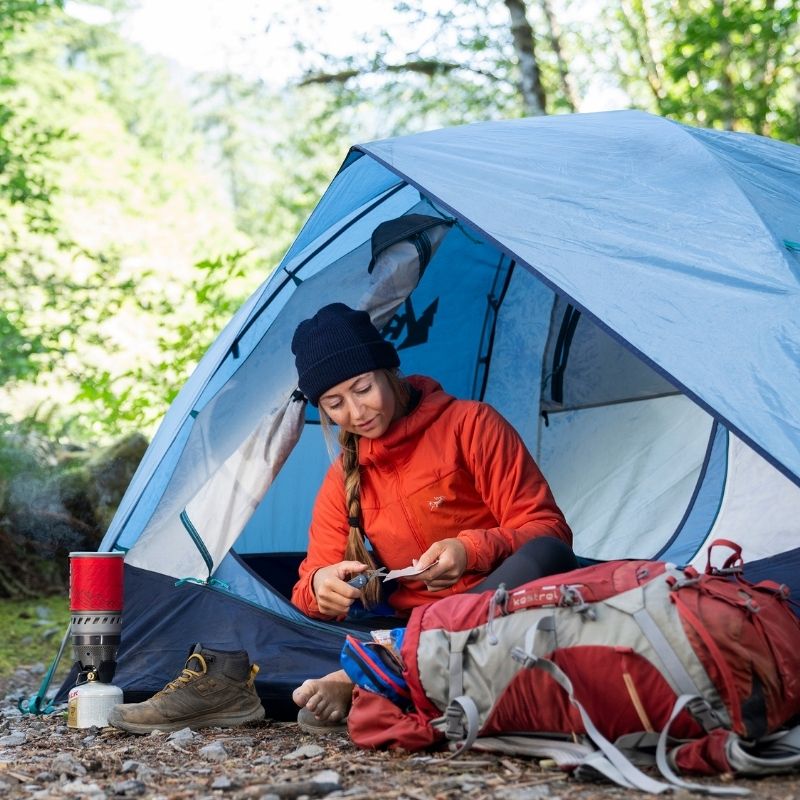Hurricanes, earthquakes, tornadoes, volcanic activity—regardless of where you live, there is a risk of some sort of natural disaster, and you need to be prepared. According to the US Energy Information Administration, when a major event occurs, the average household can be without power for 20 hours. This is only an average and depending on the natural disaster and your local infrastructure, your power can be out for much longer. You don’t want to be that family hunkering down in a dark house waiting for the power to turn back on. There are many options for emergency lighting, but only one of them requires no electricity or foresight to charge ahead of time—candles!
WHY ARE CANDLES A GOOD OPTION?
Candles are a great option for power outages because they are cheap, easy to store, and require no electricity. If the power goes out, all you need are matches and your house will no longer be in the dark. If it’s cold outside, they will help to heat your home which can make all the difference in a winter power outage. Candles also provide great protection from an EMP event, which is especially important when you need emergency lighting during thunder and lightning storms.
Worried about your emergency candles starting a fire? Use a UCO Candle Lantern to contain the candle. While you still should never leave it unattended, containing the candle in a lantern will help keep you from starting an accidental fire. UCO Gear Candle Lanterns also have handles so they can be carried from room to room, and at 6.4 oz you won’t strain your arm carrying it around. If you need to bring a light source into bad weather outside, the candle lantern also provides the candle flame protection from the elements.
WHAT KIND OF EMERGENCY CANDLE SHOULD YOU BUY?
So, what type of candles should you buy for emergencies? Let’s start with what you should avoid. Scented candles can be great—when you have only one burning at a time. If you need to light multiple candles during a power outage, all those different scents are going to get obnoxious really fast. Save your scented candles for other purposes. You should also avoid candles made with paraffin as it produces more smoke and can be toxic (source: CNN)
For a power outage during a natural disaster, we recommend our beeswax candles. They have a 12-15 hour burn time, which covers a good deal of the 20 hours most people tend to spend without power. Beeswax has a higher melt temperature which reduces dripping since the last thing you want to do after a power outage is clean up melted wax. They also burn cleaner than paraffin candles and are designed to fit perfectly into our candle lanterns.
HOW MANY CANDLES WILL YOU NEED DURING A POWER OUTAGE?
On average, most power outages happen during the darkest months of the year in winter. Depending on where you live, this can mean over 12 hours of darkness between sunset and sunrise. In fact, our headquarters in the PNW get less than nine hours of daylight per day the entire month of December. That’s 15 hours we could be in the dark during a power outage. Some of that time will be spent sleeping, so it’s best to assume you will need three to six hours of lighting from your candles per day. Most disaster preparedness articles will tell you to be prepared for three days minimum, but it’s best to prepare for even more.
Check the burn time of the emergency candles you purchase, assume you will need 3-6 hours of light, and purchase as many as you need to properly light your home for the amount of days you wish to be prepared for.

WHEN SHOULDN’T YOU USE CANDLES?
While candles can be a great option for the majority of power outages, there are times when you should avoid using them. If there has been an earthquake, or you suspect there is a gas main break anywhere near you, do not use candles. Instead, keep an UCO Gear rechargeable lantern, such as the Leschi LED Lantern, charged and ready for situations where emergency candles aren’t a viable option.
Hopefully, these tips will help prepare you to light your home during a power outage. It’s only too late to come up with a disaster plan AFTER a disaster. So, do yourself and your family a favor and slowly start stocking up on what you need when the worst happens. You won’t regret it.





















